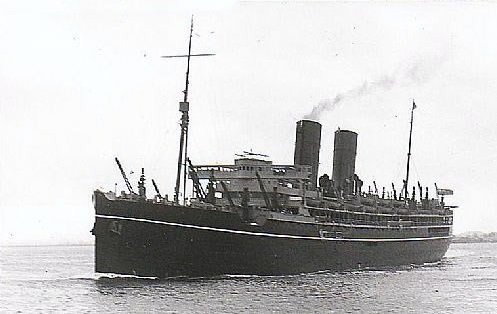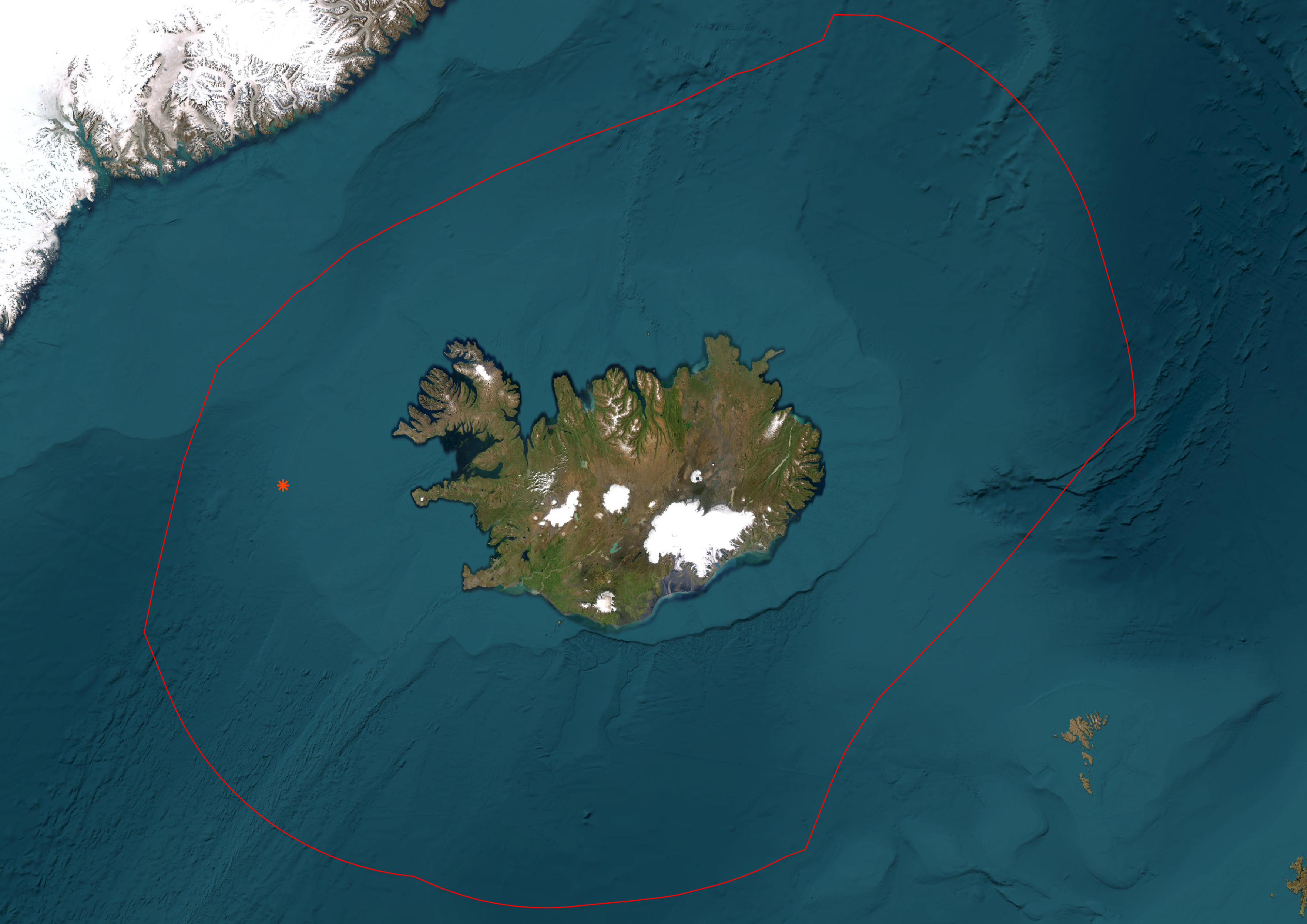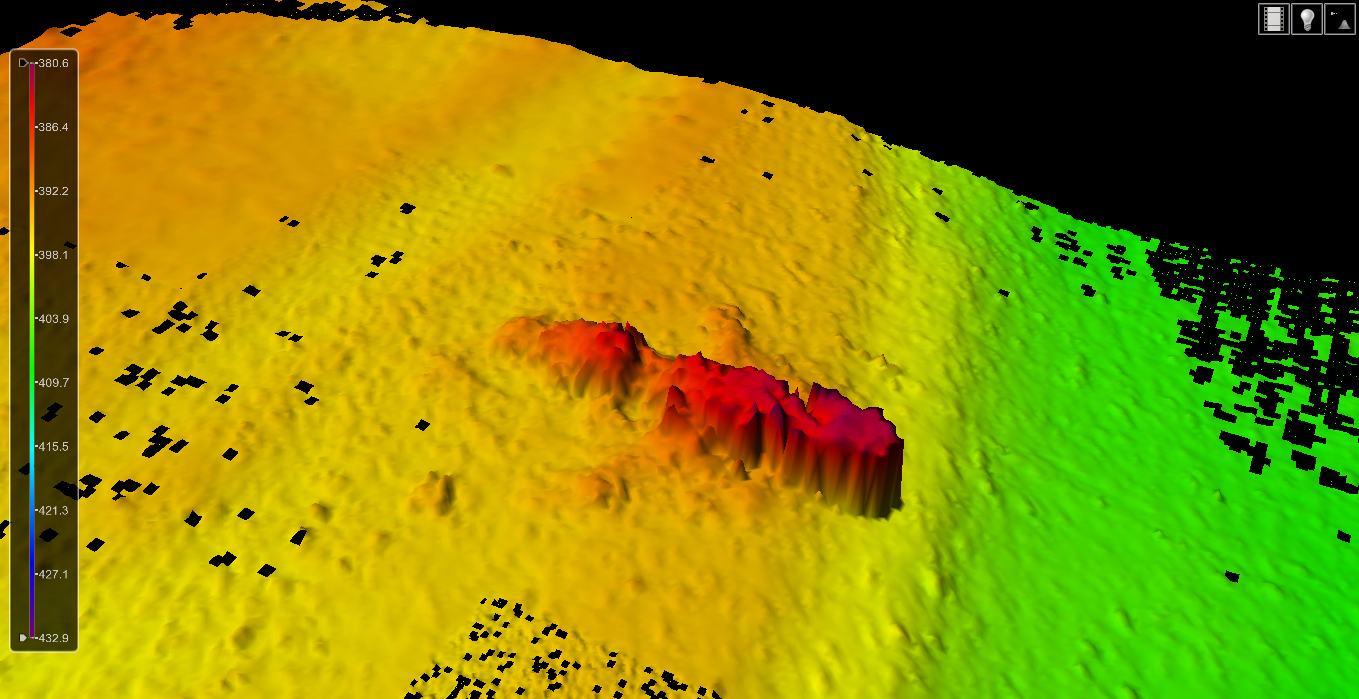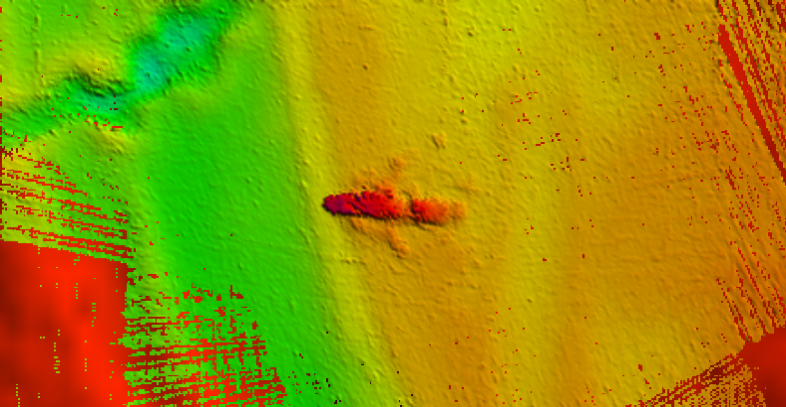- Research
- Fish tagging
- Lumpfish research
- Oceanography
- Seabed mapping
- Arnarfjörður
- Drekasvæði
- Ísafjarðardjúp
- Jökulbanki
- Jökuldjúp
- Kolbeinseyjarhryggur and adjacent area
- Kolluáll
- Langanesgrunn
- Látragrunn
- Nesdjúp
- Reykjaneshryggur and adjacent area
- Selvogsbanki
- South of Selvogsbanki
- South of Skeiðarárdjúp
- South of Skerjadjúp
- Southeast of Lónsdjúp
- Southwest of Jökuldjúp
- Suðausturmið
- Suðurdjúp
- Vesturdjúp
- East of Reykjaneshryggur
- Vestfjardarmid
- Seal research
- Whale Research
- Advice
- About
Measurements shed light on the shipwreck of HMS Rajputana
23. April 2024
 HMS Rajputana; a steam passenger ship completed in December 1925 was converted into the armed merchant cruise and sinked close to Iceland 13 April 1941.
HMS Rajputana; a steam passenger ship completed in December 1925 was converted into the armed merchant cruise and sinked close to Iceland 13 April 1941.
Charting the Depths: New Measurements Shed Light on a Familiar Shipwreck:
About 80 nautical miles west of Snæfellsnes, at a depth of approximately 400 meters beneath the ocean's surface, rests a shipwreck. Its hull spans 155 meters in length and 20 meters in width, with what appears to be the bow rising 13 meters from the seabed, facing west. This intriguing discovery lies adjacent to the far edge of an iceberg ploughmark, stretching 330 meters in length and 12 meters deep.
The ship's true dimensions may surpass the data's current estimates, the stern seems to be submerged beneath layers of sediment. Surrounding the wreck are scattered artifacts, likely remnants of the vessel itself.

Location of Rajputana, west of Snæfellsnes.
Kristján H. Kristinsson, captain of the research vessel Árni Friðriksson, mentioned that Icelandic trawlers stumbled upon this wreck around 1991/1992. The region is a known fishing ground for redfish, and trawlers have accidentally tangled their fishing equipment on the wreck. Notably, a trawler from Akureyri retrieved a chain from the wreckage.
The wreck is believed to that of the armed merchan vessen HMS Rajputana but the recorded location of Rajputana, at 64° 50'N, 27° 25'W, is a calculation based on wartime routes. However, this estimate is subject to error, as it hinges on the ship's direction and velocity prior to sinking, potentially leading to a deviation of several miles from the actual site. During MFRI´s recent seabed mapping expedition, it traversed the official location of Rajputana, yet found no trace. Consequently, it is reasonably inferred that this spot, 64° 57'N, 27° 19'W, marks the final resting place of the armed merchant ship HMS Rajputana and the crew members who remained aboard.
Notably, before the outbreak of the war, HMS Rajputana accommodated distinguished passengers such as Mahatma Gandhi, the yogi Paramahansa Yogananda and Lawrence of Arabia, adding historical depth to its story. The following is a video of Gandhis voyage on the SS Rajputana on august 29, 1939. See more on YouTube.

Gunnar Birgisson, an experineced local diver, swiftly reached out to the seabed mapping team and informed them of the precise location of the wreckage of HMS Rajputana.
It's noteworthy that HMS Rajputana's sister ship, HMS Rawalpindi, likely lies at a similar latitude to the east of Iceland. Rawalpindi is among other significant wrecks that have met their fate in Icelandic waters. Originally converted by the British Admiralty into an armed merchant cruiser, HMS Rawalpindi was requisitioned on August 26, 1939.

The Northern Patrol
During World War II, British cruisers patrolled the Northern waters to stop neutral ships from aiding Germany and to monitor German warships. This duty was demanding, especially in harsh weather. To free up cruisers for other tasks, the Admiralty repurposed ocean liners into Armed Merchant Cruisers (AMCs).
The Armed Merchant Cruiser
The SS Rajputana, originally a steam passenger ship completed in December 1925 for the P. & O. Steam Navigation Co Ltd, London, was requisitioned by the Admiralty on September 4, 1939, and converted into the armed merchant cruiser HMS Rajputana (F 35), commissioned in December 1939. On April 13, 1941, while serving as part of convoy HX-117 and patrolling the Denmark strait, it was hit by a torpedo from the German submarine U-108 west of Iceland. Despite evasive maneuvers and engagement with the attacking submarine, the ship was struck, resulting in significant loss of life, including the commodore and crew members. (www.uboat.net.)
The ‘HX’ Convoy System
The following insight on the “HX” convoy system are drawn from The Canadian Naval Review.
"During World War II, the “HX” convoy series played a crucial role in transatlantic shipping, heavily escorted by Canadian warships. The series began with HX-1 in September 1939 and continued until HX-358 in June 1945, with convoys originating from Halifax and later New York The convoys covered about 2,500 miles on average. Initially, heavy cruisers or armed merchant cruisers served as ocean escorts, later replaced by battleships for deterrence against German surface vessels. The success of the HX convoys relied on evasive routing to prevent losses. Despite some losses and challenges, the convoys remained a vital lifeline during the war."
Enemy in sight!
The following is a recount of the events as described on www.warcovers.dk.
The U-boat had initially spotted the armed merchant cruiser on April 11 and commenced tracking it as it patrolled, navigating a zigzag course at high speed. Over the course of the pursuit, U-108 launched several torpedoes at HMS Rajputana.
April 11 09:45 - HMS Rajputana first spotted by U-108.
April 11 18:08 - Two torpedoes fired, missed.
April 11 20:46 - One torpedo fired, missed.
April 12 20:48 - One torpedo fired, missed.
April 13 07:40 - One torpedo fired, missed.
April 13 07:43 - One torpedo fired, hit the stern.
April 13 08:23 - One torpedo fired, failed to sink.
April 13 09:30 - One torpedo fired, hits and sinks.
Testimony of Murray William Knowles
Knowles recounted the events describing the sudden attack by a German submarine, the valiant but ill-equipped response of the crew, and the eventual abandonment of the sinking vessel. Knowles and fellow survivors endured hours in overcrowded lifeboats before being rescued by British destroyers sailing from Iceland. Knowles testimony can be read in full here.
Pictures of the Ship and further information can be found here.
